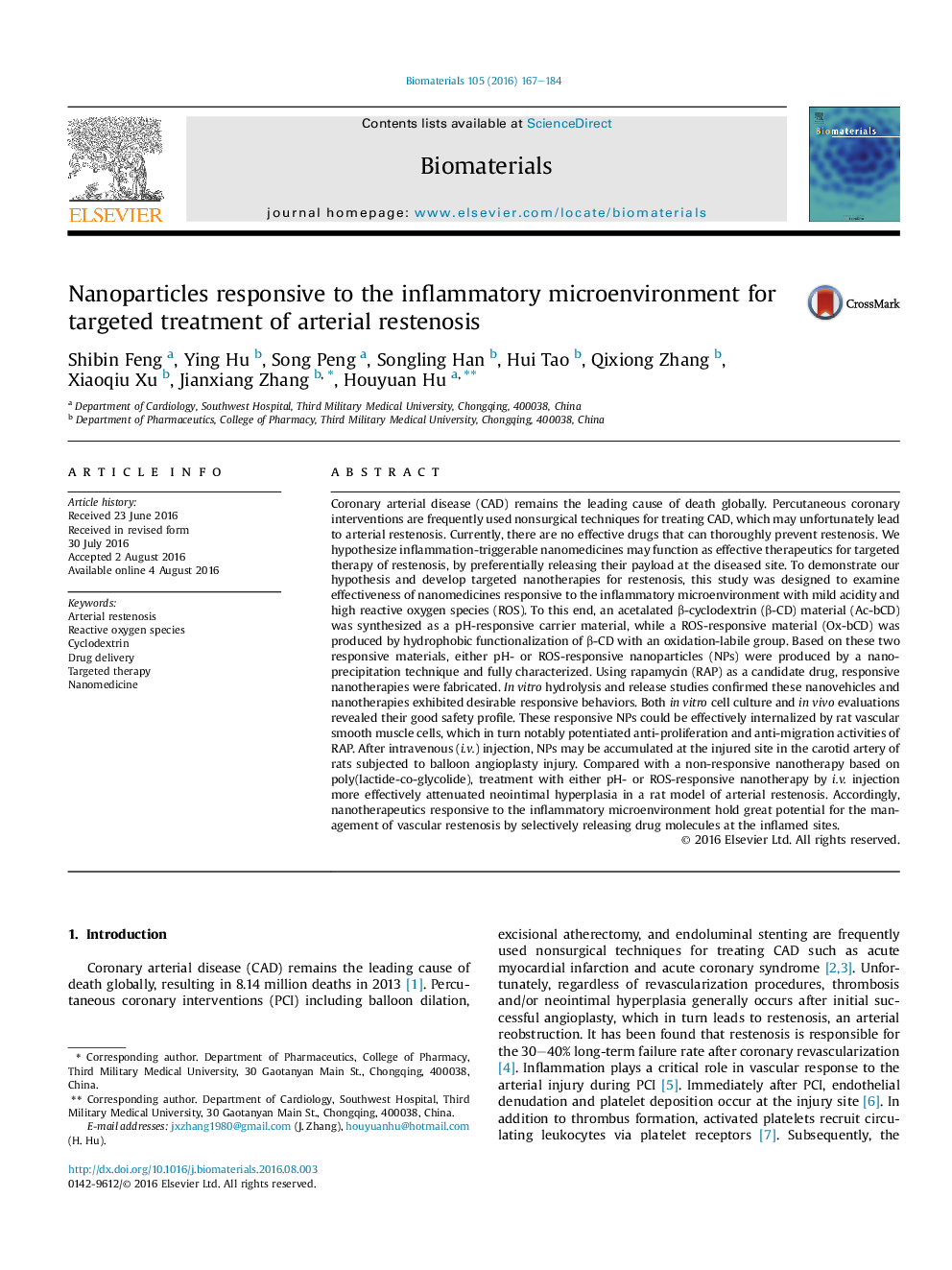| کد مقاله | کد نشریه | سال انتشار | مقاله انگلیسی | نسخه تمام متن |
|---|---|---|---|---|
| 6451135 | 1416162 | 2016 | 18 صفحه PDF | دانلود رایگان |
Coronary arterial disease (CAD) remains the leading cause of death globally. Percutaneous coronary interventions are frequently used nonsurgical techniques for treating CAD, which may unfortunately lead to arterial restenosis. Currently, there are no effective drugs that can thoroughly prevent restenosis. We hypothesize inflammation-triggerable nanomedicines may function as effective therapeutics for targeted therapy of restenosis, by preferentially releasing their payload at the diseased site. To demonstrate our hypothesis and develop targeted nanotherapies for restenosis, this study was designed to examine effectiveness of nanomedicines responsive to the inflammatory microenvironment with mild acidity and high reactive oxygen species (ROS). To this end, an acetalated β-cyclodextrin (β-CD) material (Ac-bCD) was synthesized as a pH-responsive carrier material, while a ROS-responsive material (Ox-bCD) was produced by hydrophobic functionalization of β-CD with an oxidation-labile group. Based on these two responsive materials, either pH- or ROS-responsive nanoparticles (NPs) were produced by a nanoprecipitation technique and fully characterized. Using rapamycin (RAP) as a candidate drug, responsive nanotherapies were fabricated. In vitro hydrolysis and release studies confirmed these nanovehicles and nanotherapies exhibited desirable responsive behaviors. Both in vitro cell culture and in vivo evaluations revealed their good safety profile. These responsive NPs could be effectively internalized by rat vascular smooth muscle cells, which in turn notably potentiated anti-proliferation and anti-migration activities of RAP. After intravenous (i.v.) injection, NPs may be accumulated at the injured site in the carotid artery of rats subjected to balloon angioplasty injury. Compared with a non-responsive nanotherapy based on poly(lactide-co-glycolide), treatment with either pH- or ROS-responsive nanotherapy by i.v. injection more effectively attenuated neointimal hyperplasia in a rat model of arterial restenosis. Accordingly, nanotherapeutics responsive to the inflammatory microenvironment hold great potential for the management of vascular restenosis by selectively releasing drug molecules at the inflamed sites.
Journal: Biomaterials - Volume 105, October 2016, Pages 167-184
